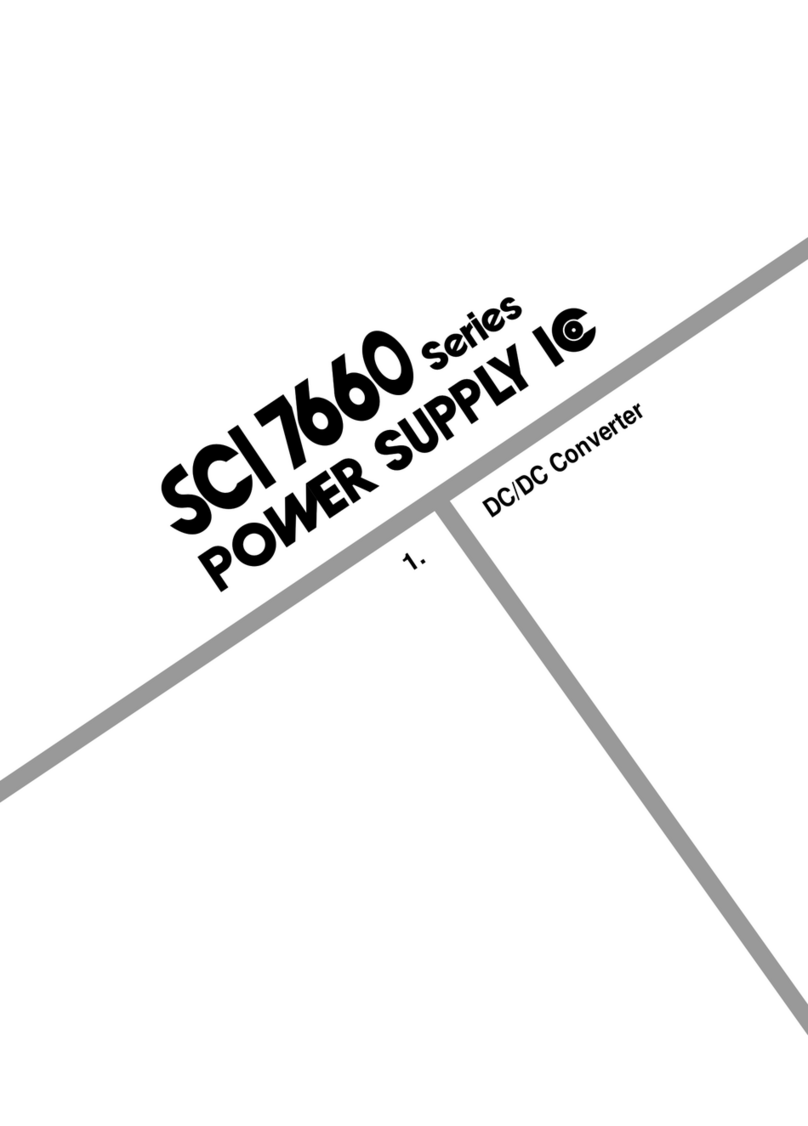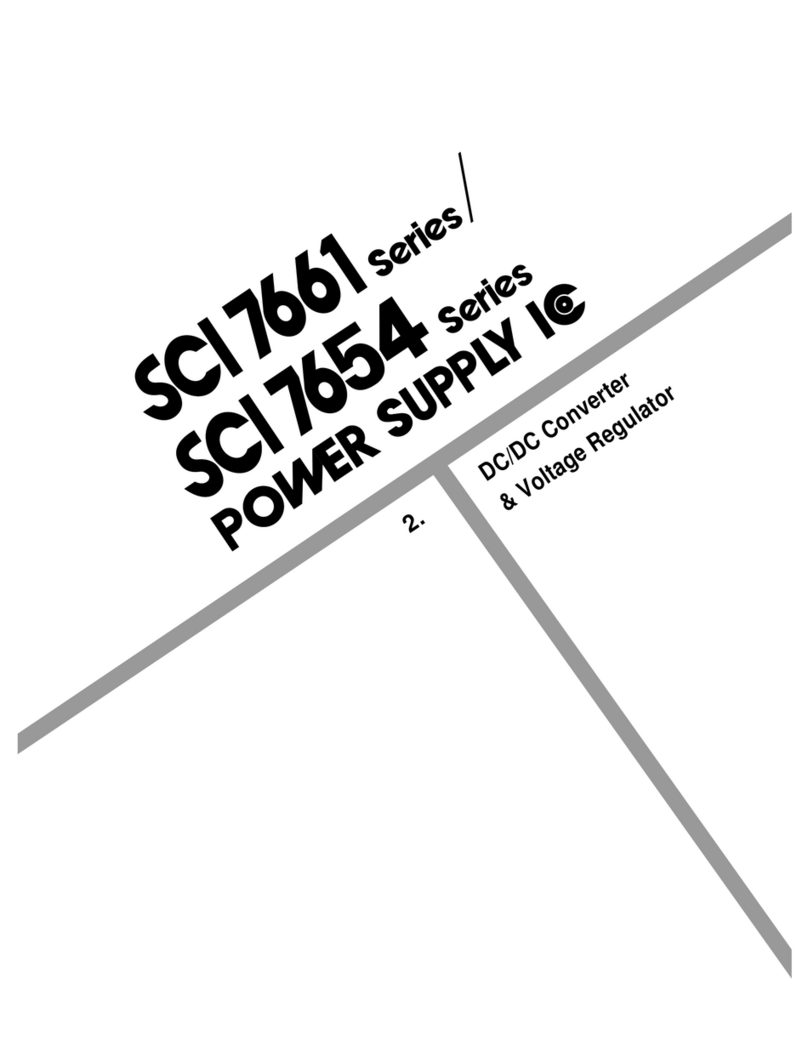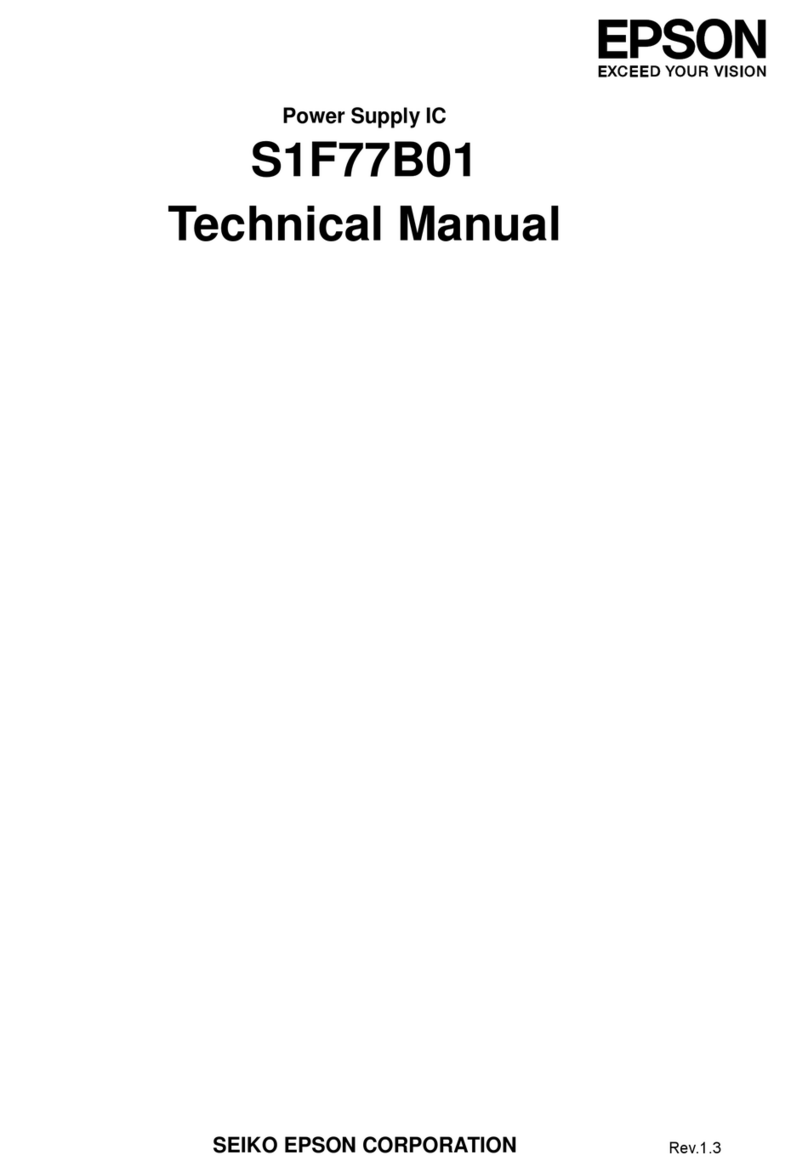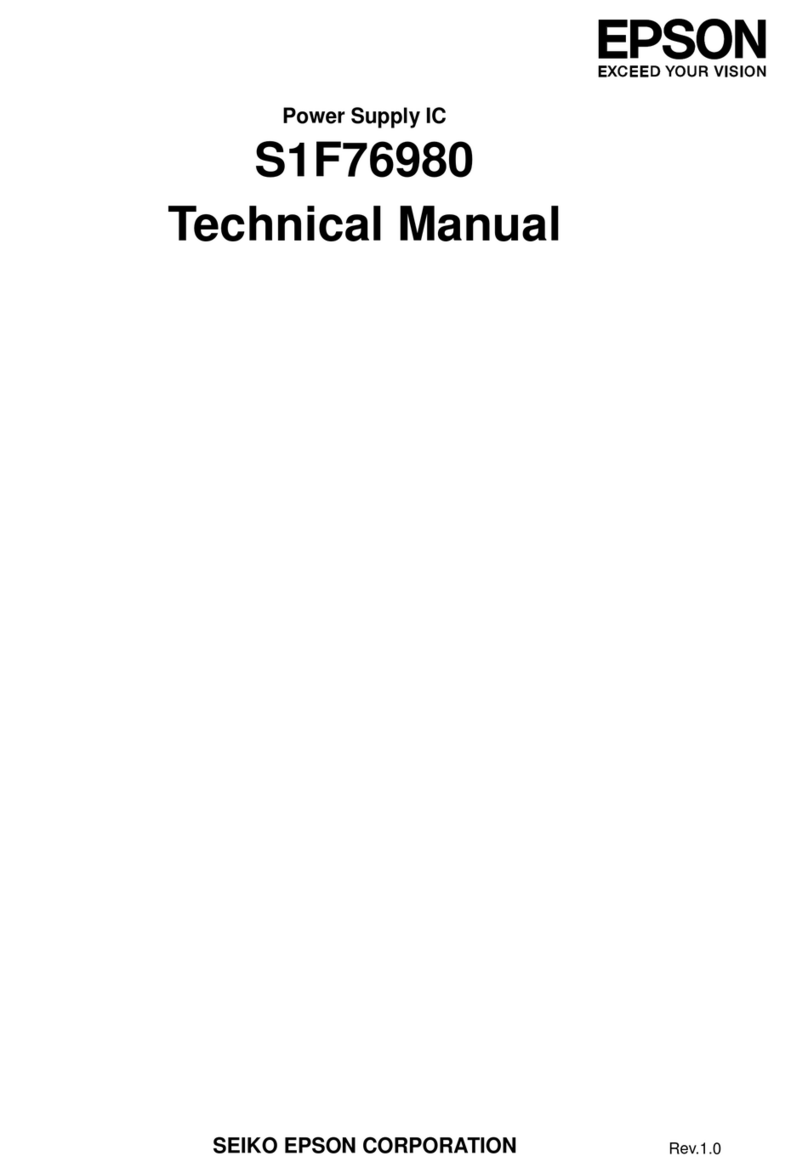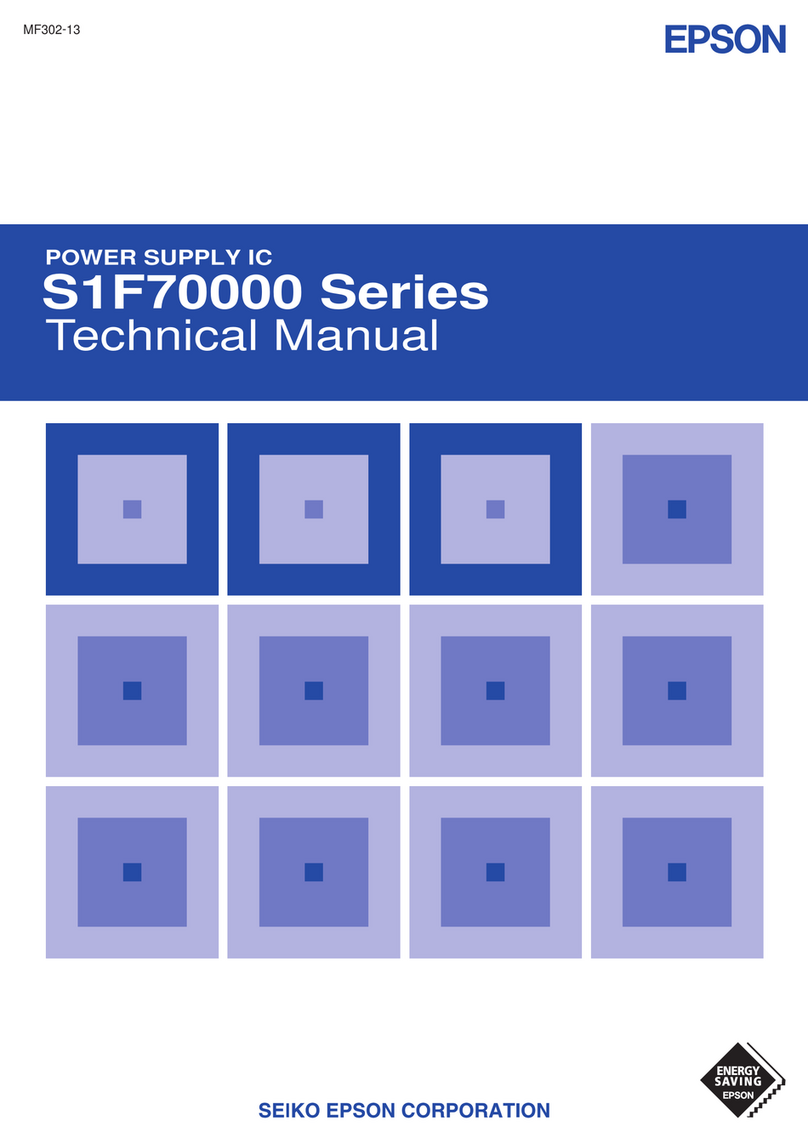
1. DESCRIPTION
S1F76640 Technical Manual (Rev.1.5) EPSON 1
1. DESCRIPTION
The S1F76640 is a high efficient and low power consuming CMOS DC-DC converter.
It consists of two components: a booster and a stabilizer.
The booster provides double boosting output (3.6 to 11V), triple boosting output (5.4 to 16.5V) or quadruple
boosting output (7.2 to 22V) for input voltage (1.8 to -5.5V).
Moreover, the use of external parts such as diode and capacitor provides boosting of higher magnification.
The voltage stabilizer enables you to set to any output voltage.
It also provides three types of negative temperature gradients for voltage stabilization output, and it is most
suitable for LCD power.
The S1F76640 enables you to drive an IC (liquid crystal driver, analog IC, etc.) that would usually require
another power supply in addition to the logic main power, using a single power supply. Therefore, it is suitable
for supplying micro-power to compact electrical devices such as hand-held computers with low power
consumption.
2. FEATURES
(1) Highly efficient and low power consuming CMOS DC-DC converter
(2) Easy conversion from input voltage VDD (+3.3V) to three types of positive voltages
Output 2 ×VDD (+6.6V), 3 ×VDD (+9.9V), and 4 ×VDD (+13.2V) from input VDD (+3.3V)
(3) The use of external parts such as diode and capacitor provides boosting of higher magnification
(4) Built-in output voltage stabilizer
- Any output voltage settable with external resistor
(5) Output current: Max. 20mA (VDD = +5V)
(6) Efficiency of power conversion: typ.95 %
(7) Three types of reference voltage with negative temperature gradient characteristics suitable for LCD drive
power supply.
(8) Power-off operation by external signal
- Static current for power-off: Max. 2μA
(9) Boosting of higher magnification through serial connection
(10) Low voltage operation: Most suitable for battery drive
(11) Built-in CR oscillation circuit
(12) SSOP2-16 pins
(13) This IC is not designed to be radiation resistant






